Economical, Efficient, Simple Device for Controlled Annealing NiTi Archwire
Harshal A. Patil1, S.S. Chitko2, Veerendra V. Kerudi3, Neeraj S. Patil4, Pawankumar Dnyandeo Tekale5
1 Post Graduate Student, Department of Orthodontics, ACPM Dental College, Dhule, Maharashtra, India.
2 Professor and Head, Department of Orthodontics, ACPM Dental College, Dhule, Maharashtra, India.
3 Professor, Department of Orthodontics, ACPM Dental College, Dhule, Maharashtra, India.
4 Professor, Department of Orthodontics, ACPM Dental College, Dhule, Maharashtra, India.
5 Director and Orthodontist, Dnyanita Orthodontic Care, Aurangabad, Maharashtra, India.
NAME, ADDRESS, E-MAIL ID OF THE CORRESPONDING AUTHOR: Dr. Harshal A. Patil, 406B Zambre Wada, Near New Post Office, Muktainagar, Muktainagar, Jalgaon, India.
E-mail: drharshalortho@gmail.com
In fixed orthodontic treatment, for the cinch back purpose, there is need of annealing of distal end of NiTi arch wire. During this procedure the area or length to be annealed is difficult to control. This inappropriate heating leads to deleterious effect on property of the wire. To prevent this problem a simple economical and efficient device was prepared that prevents annealing of excessive length of wire and thus prevents the deterioration of wire required for appropriate action.
Cinch back,Modified annealing tweezer,Orthodontic treatment
Introduction
Annealing is defined as a procedure, where the effects achieved by strain hardening are reversed by heating the metal. Usually the temperature used is half the melting point of pure metal or the fusion temperature of alloy on the absolute temperature scale [1]. The change in the crystal lattice arrangements is most likely to occur during annealing, a routine procedure where the ends of wire is heated, before placing the archwire into the molar tube [1].
Clinically, while inserting the NITI wire, we need to anneal the wire at the distal end for cinched back purpose [1,2]. While annealing, wire is heated either with gas torch or spirit lamp. During this procedure the area or length to be annealed is difficult to control. This inappropriate heating leads to deleterious effect on property of the wire [3,4].
To prevent this problem a simple, economical and efficient device was prepared that prevents annealing of excessive length of wire and thus prevents the deterioration of wire required for appropriate action.
Fabrication of the Appliance
The appliance is economical, efficient and simple to fabricate. It is made up of most commonly used instrument tweezer and easily available cut pieces of ceramic tiles which is a non-conducting material and do not get discolored and deformed.
Attach two cut pieces of ceramic tiles (non-conducting material) having same size to tweezer with a synthetic adhesive Araldite [Table/Fig-1]. Mark the wire ends with marker to a point up to which annealing is to be done [Table/Fig-2].
Two same size cut pieces of ceramic tiles as a non-conducting material attached to tweezer;
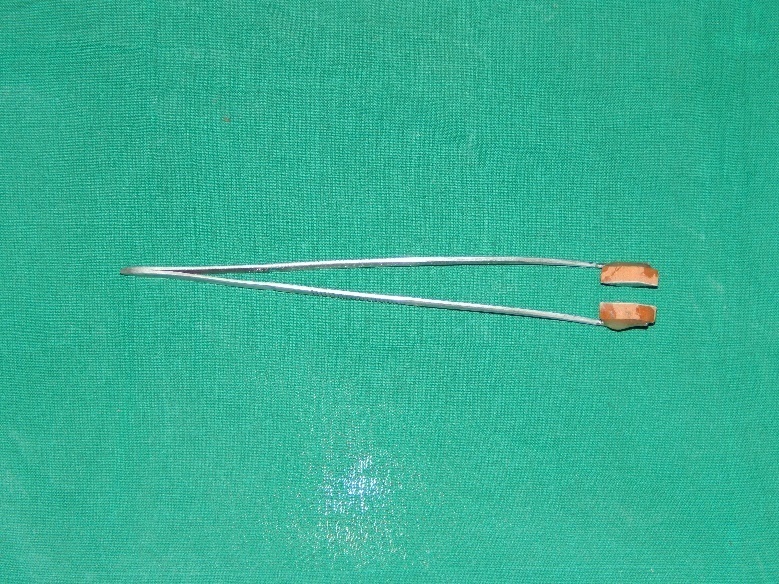
Mark the wire ends with marker to a point upto which annealing is to be done
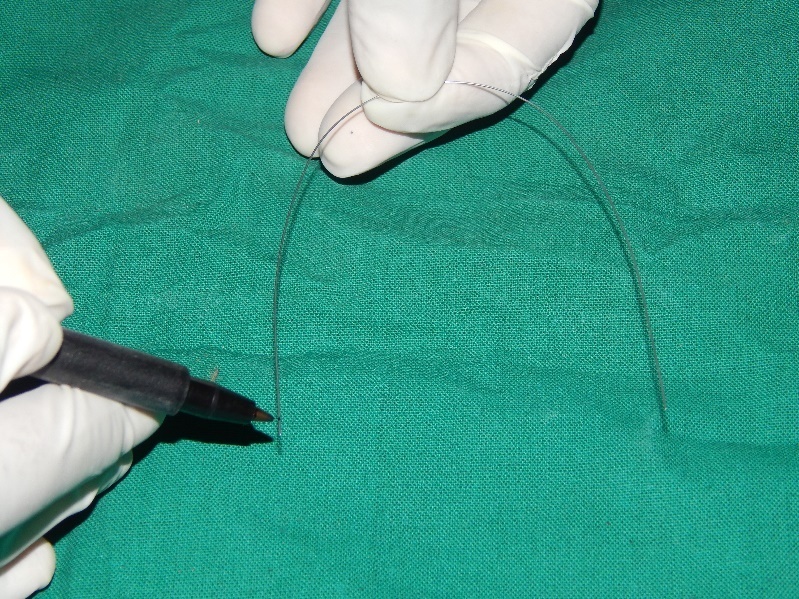
Introduce the wire into the modified tweezer and hold it properly [Table/Fig-3]. Introduce the distal end of the wire to the flame [Table/Fig-4]. Finally the wire is annealed till the point of limitation [Table/Fig-5].
Introduce the wire into the modified tweezer and hold it;
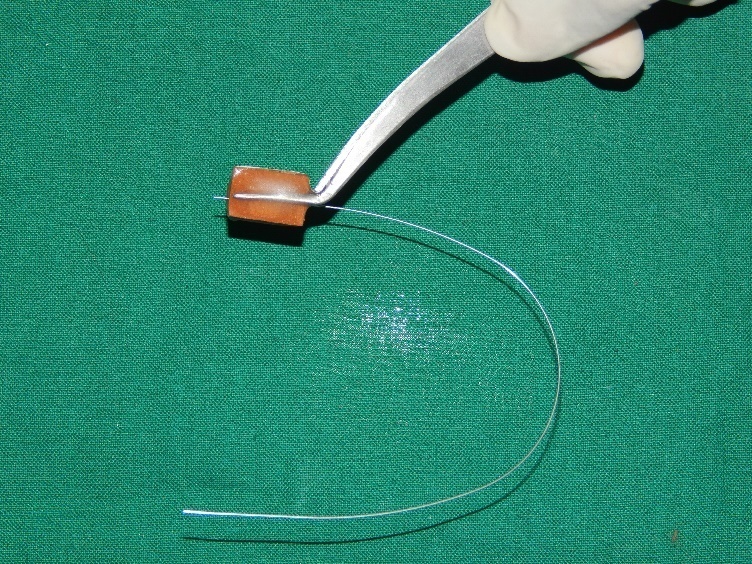
Introduce distal end of the wire to the flame
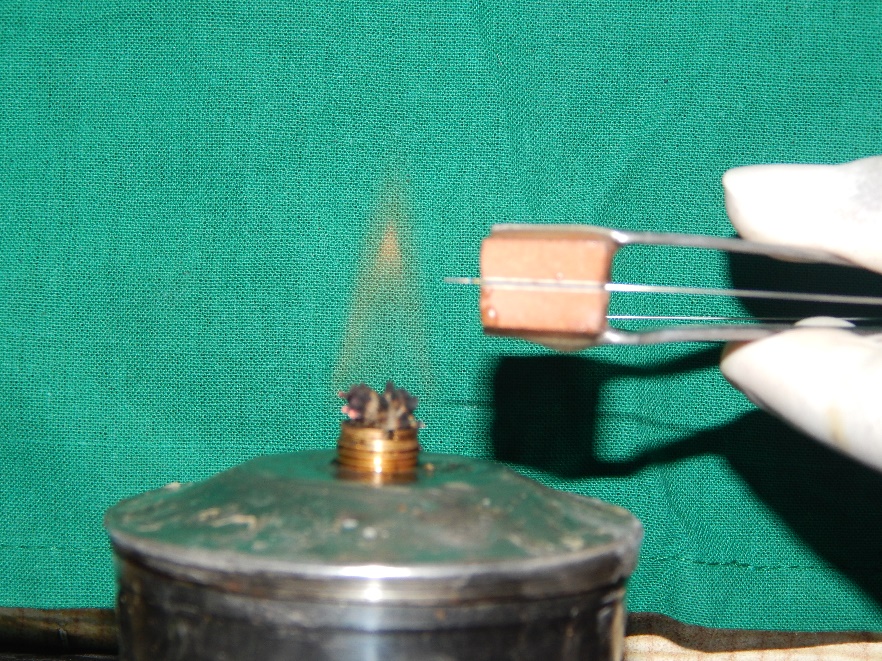
Finally the wire is annealed till the point of limitation;
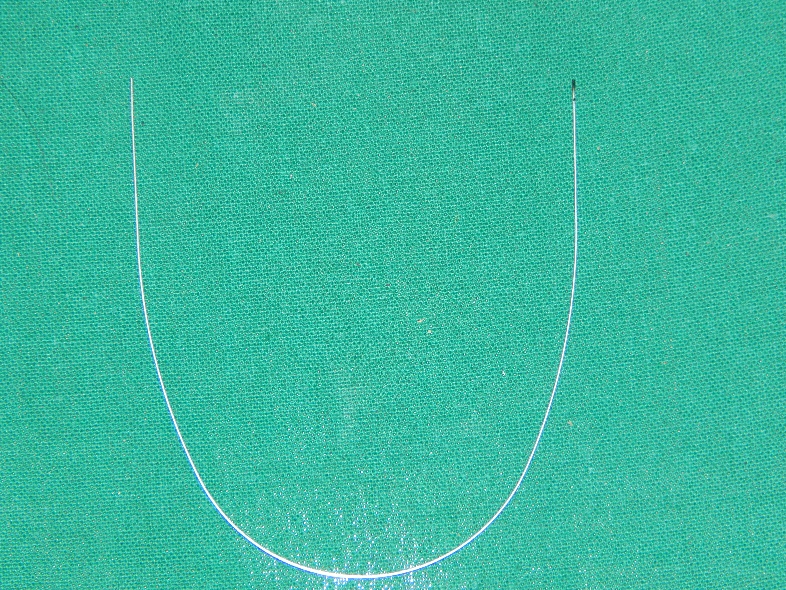
Clinical Application
The required amount of the length of the wire is determined for working model of the patients cast. The wire ends are marked and annealed. After the annealing of required length of the NiTi wire, the wire is placed in buccal tube in patient’s mouth. The wire is cinched with bird beak or weing guard plier [Table/Fig-6].
Wire is introduced intra-orally though molar buccal tube of the appliance and cinched back with bird beak plier
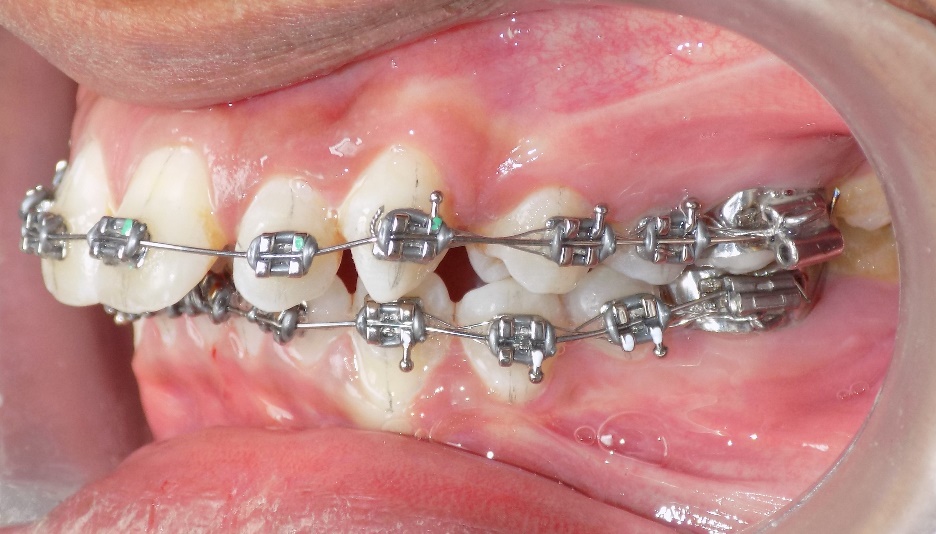
Advantages
Ease of fabrication and less armamentarium required.
The desired length of the NiTi wire is annealed eliminating the unwanted heating to the wire and deleterious effect on property of the wire.
It enables cinching of the wire exactly at distal end of the molar buccal tube.
It is economical and easy to use.
Ease of comfort both for the patient and the clinician as cinching is done efficiently within shorter time.
[1]. Anusavice Kenneth J, Phillips Science of Dental Materials 200711th EditionSaunders Elsevier Publications:633-34. [Google Scholar]
[2]. Kusy RP, A review of contemporary archwires: their properties and characteristics Angle Orthod 1997 67(3):197-208. [Google Scholar]
[3]. Wendell P, Rubenstein L, Germane N, Clinical aid: instrument for cinching archwires J Clin Orthod 1990 24:614-17. [Google Scholar]
[4]. McLaughlin RP, Bennett JC, Trevisi HJ, Systemised orthodontic treatment mechanics 2001 EdinburghMosby [Google Scholar]